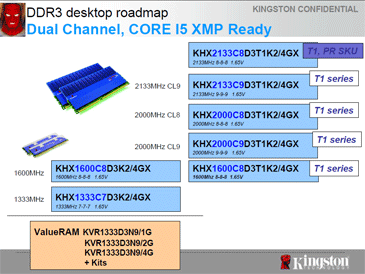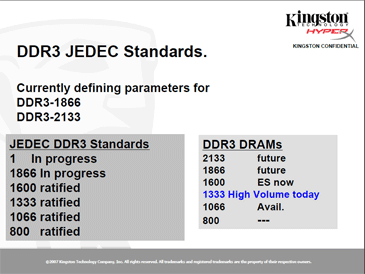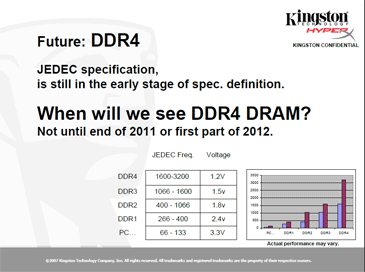Behind the scenes at Kingston Technology
October 21, 2009 | 09:34

Behind the scenes at Kingston Technology
Kingston invited bit-tech out to its headquarters in Fountain Valley, California, and inevitably we took the British weather with us, turning the sunshine of Orange County into the grey and wet of London.For an area that has 350 days of sun a year, we can only apologise.
Kingston was excited to introduce us more to its business, what it does and why even though it’s fundamentally different to the likes of Corsair or OCZ, it still has enthusiasts in mind.
Founded in October 1987, the 22 year old company is the largest computer memory producer on the planet, and despite its size and multi-billion dollar revenue, it’s still a privately held company. This, we were told, allows it to do what it wants, when it wants to, without pandering to the whims of shareholders only after investment return.
The downside, we pointed out, is that raising cash for large investments is far more difficult, however Kingston informed us that since the company had consistently done well, it has plenty in the bank and little in the way of borrowing.


Just one half of Kingston's offices and manufacturing, in Fountain Valley, California. Click to enlarge
We suppose this is a benefit of sticking to what you’re good at: Kingston only entered the Flash market in 2003 (a so called “recent” move) and in world of diversification to spread risk, it’s a bit of an anomaly to concentrate on its core DRAM business pretty full on. It has worked for Kingston though and as the 79th top privately held company in US with a 2008 revenue of $4bn, it employs 4,000 employees worldwide (dropping from ~4,500 in 2007), creating a revenue per employee at around $1m. This is respectively above Dell and HP, however still a way off the “in a world of its own” Apple Corp. That dollar per employee factor is undoubtedly impressive, but comes up later in a more negative respect.
We asked why Kingston doesn’t vertically integrate: the only thing missing is DRAM wafer production and Kingston does everything but this. At eight billion dollars for a Fab facility, not to mention consistent investment in tooling, the answer provided a clear indication that it’s still somewhat out of Kingston’s reach, and intentions, as the company was insistent that a combination of its size (read: buying power) and being able to buy from a range of producers was a market advantage.
To reaffirm this fact, in 2006 there was heavy investment in DRAM IC capacity, but this increased beyond the anticipated demand for 2007 and 2008 so prices remained very low. The effect of this year’s economic downturn was the final nail in the coffin for a few, with those who survived scaling back production and future investments as a result.
In today’s market there’s technically an overall shortage, which is why we’re seeing DDR2 prices rise ahead of DDR3 as DRAM IC manufacturers have shifted production recently. Also, OEMs have been sucking the DDR2 supplies dry and will continue to do that until value-mainstream Intel parts with DDR3 arrive in three to four months time.
Kingston on Memory
As you’d expect, Kingston claims 1,600MHz CL8/9 and 2,000MHz CL9 are the most purchased and the Lynnfield market is far more important than Bloomfield, but it won’t be until mid-next year that we start to see 4GB modules arriving. Kingston is just waiting for the ICs, but the company also claimed it doesn’t really see a demand for 8GB (4GBx2) kits. We were told it can stuff more physical ICs per DIMM, but it pushes the cost through the roof: companies will pay it for servers but regular customers won't. For those wanting 8GB kits, you're stuck with using four DIMMs for the time being.

Despite classing 2,133MHz as a "PR SKU" it's still readily for sale in greater quantities than many other companies offer performance parts. Click to enlarge
JEDEC is currently working on future parameters for 1,866MHz and 2,133MHz, with work on an 1,866MHz standard currently in progress. All memory ICs bought now have a native speed of 1,333MHz, with 1,600MHz chips being engineering samples only.

MSI MPG Velox 100R Chassis Review
October 14 2021 | 15:04










Want to comment? Please log in.